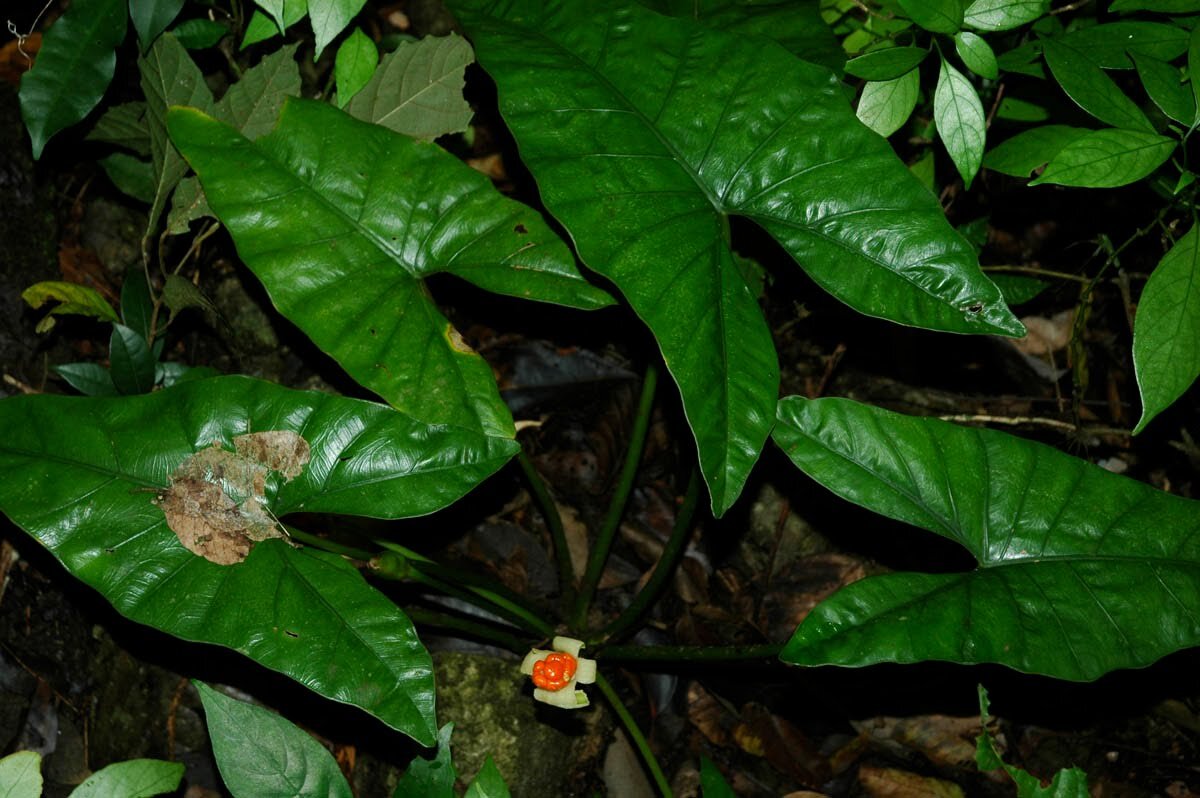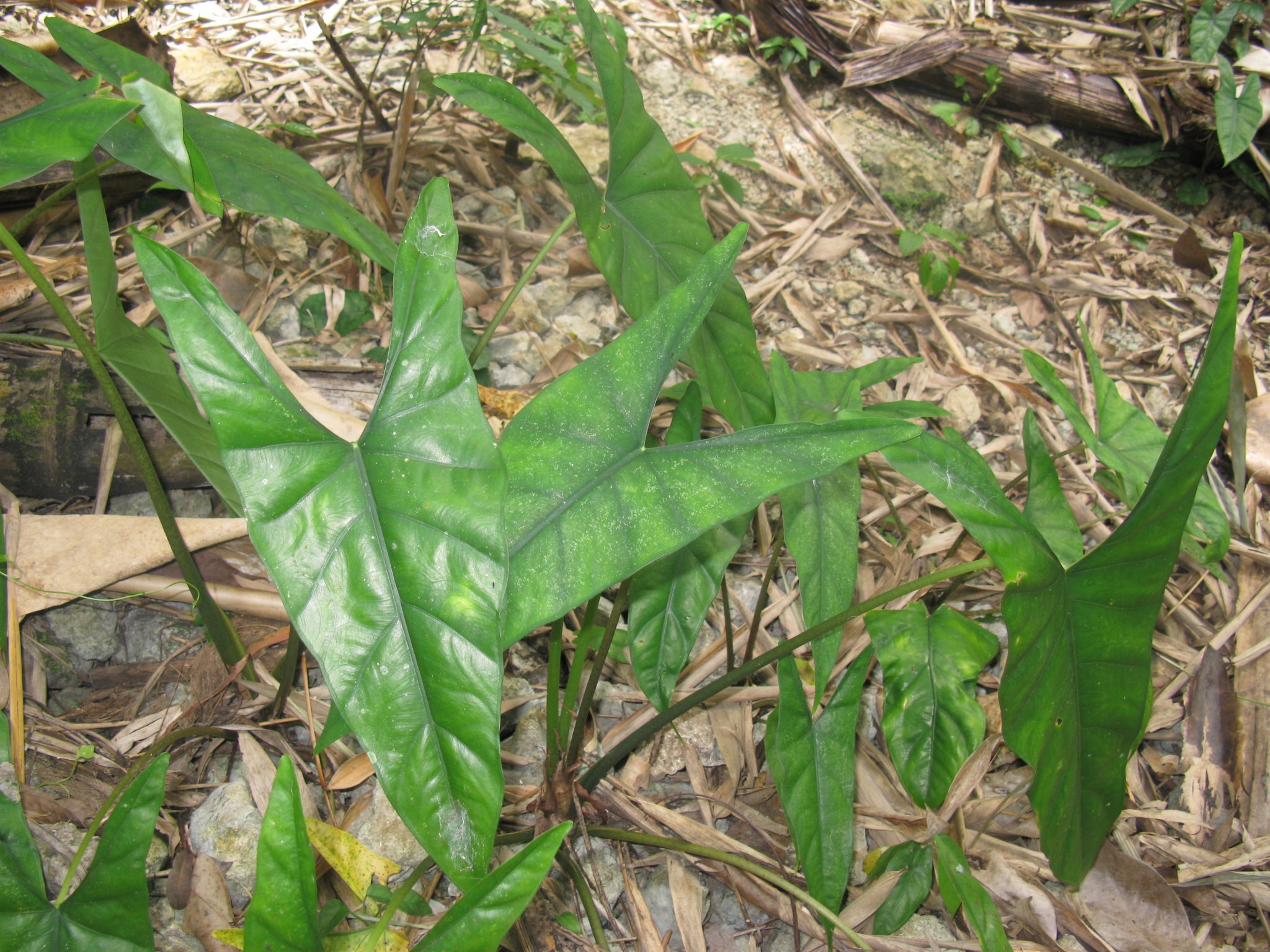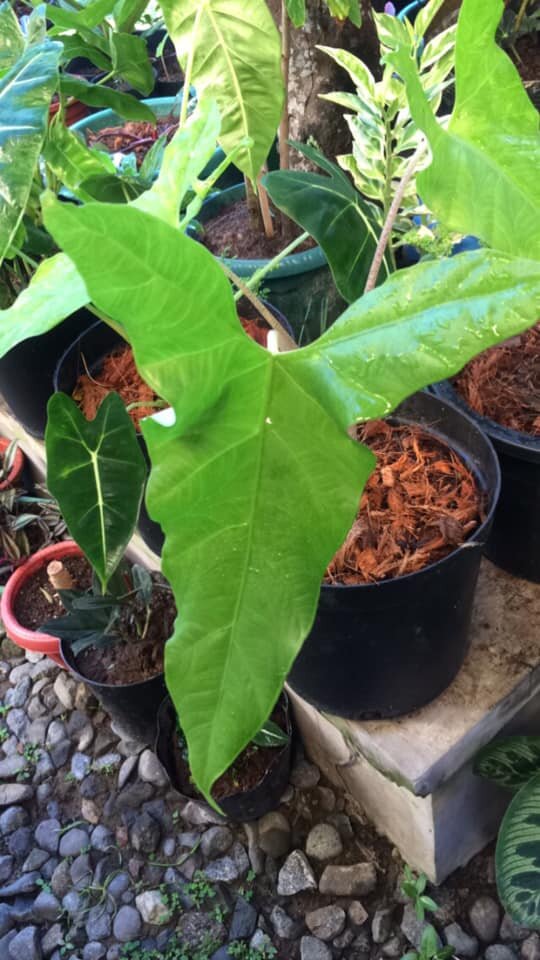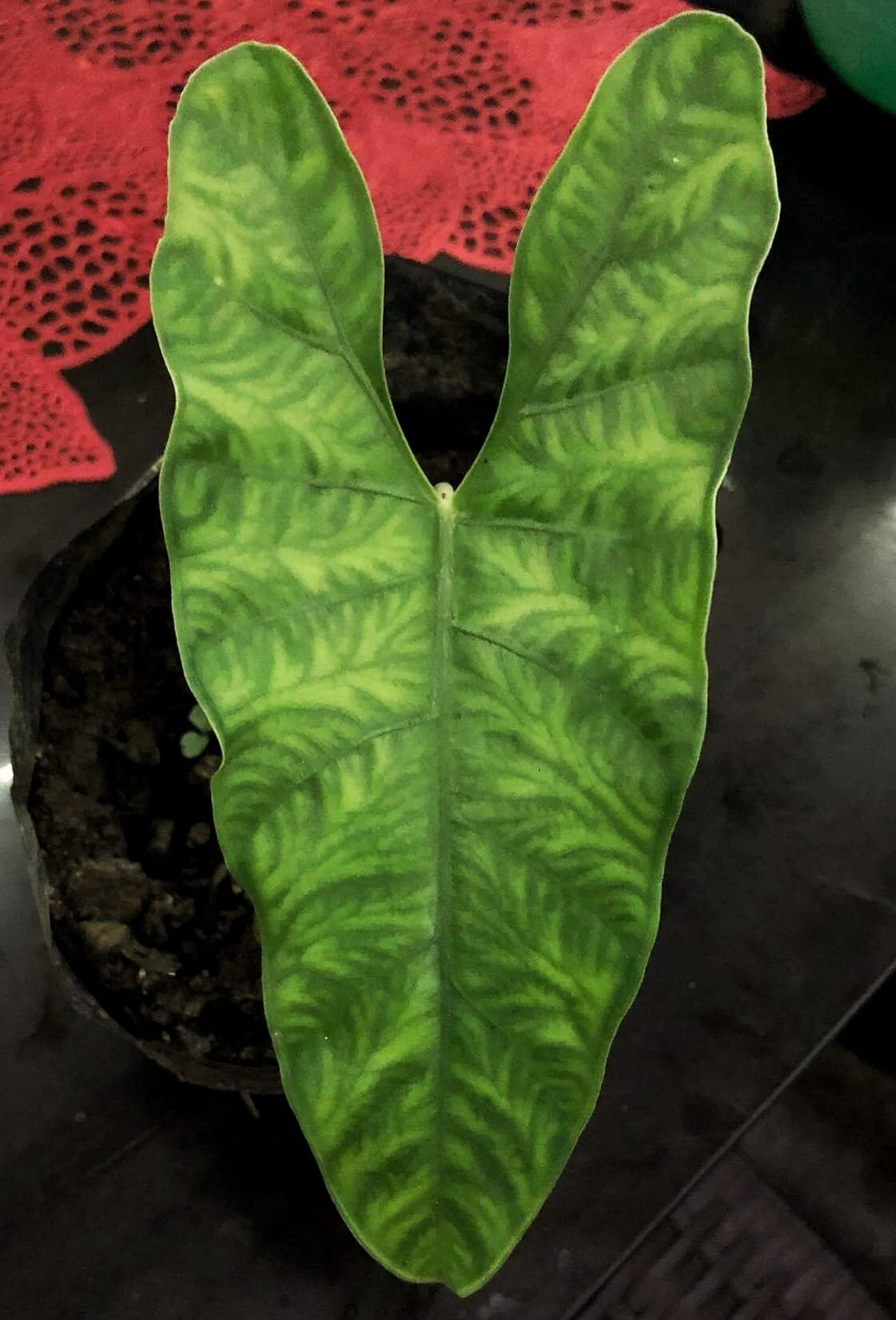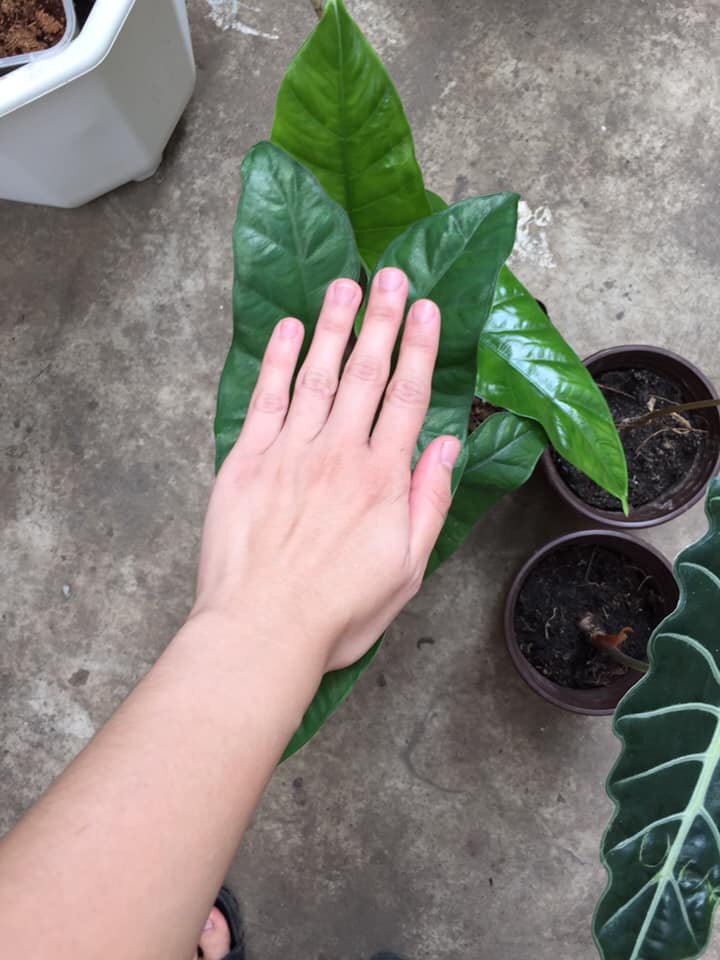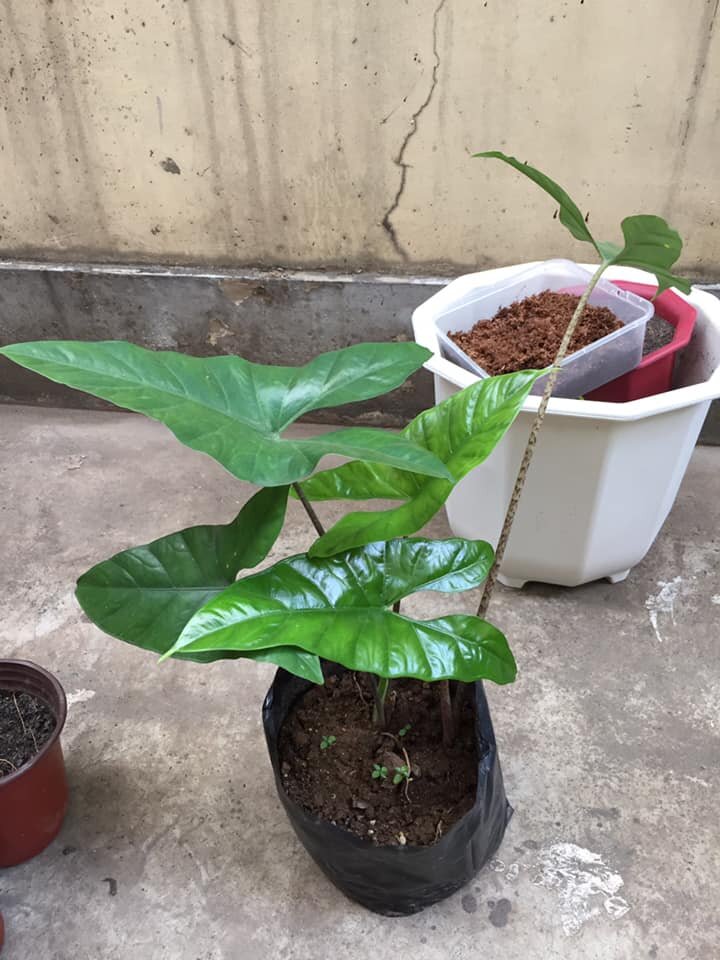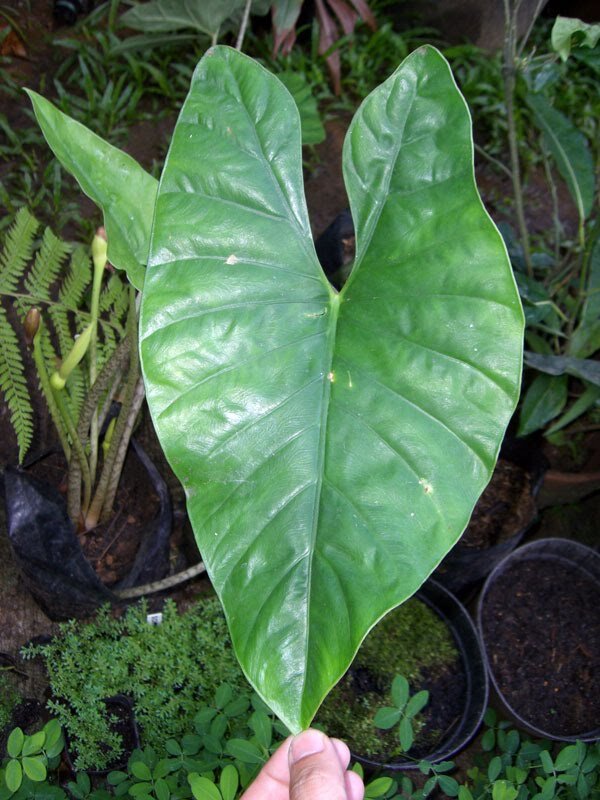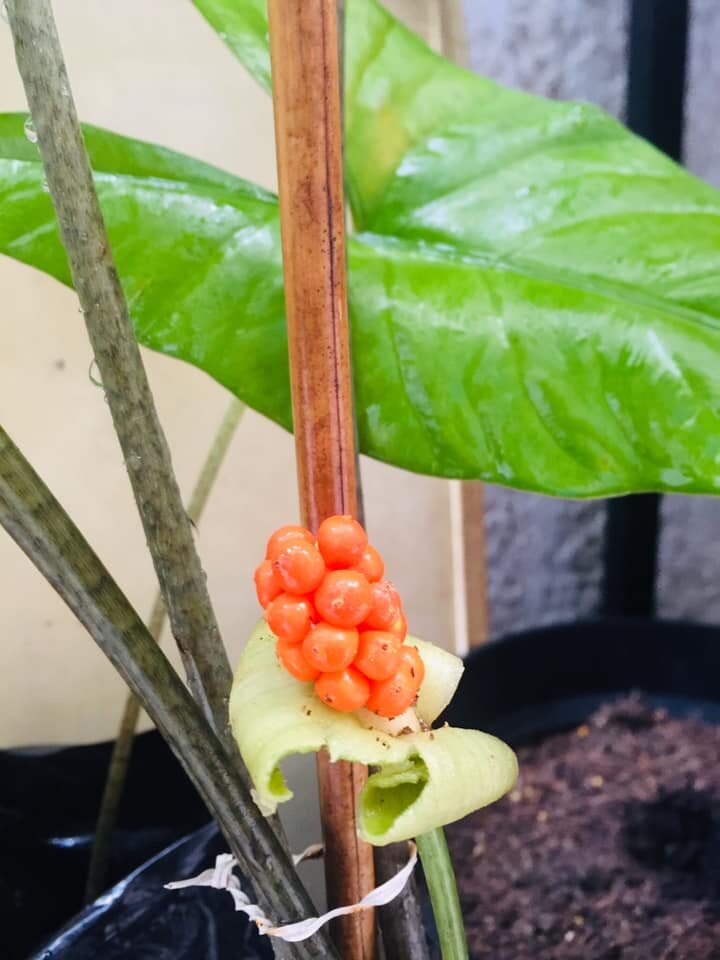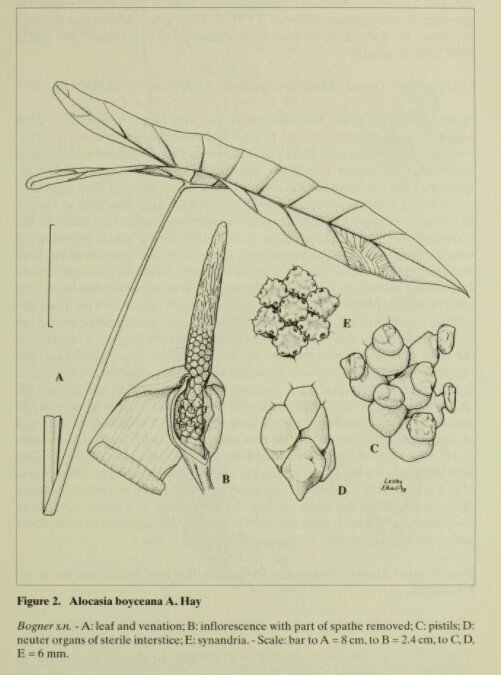ALOCASIA BOYCEANA
ORIGINAL DESCRIPTION:
Ab Alocasia ramosii spadice stipitato, stigmatis acute lobatis, lobis posticis folii lobum anticum circa dimidium aequantibus differt.
TYPUS: Cult. Botanischer Garten MiAnchen ex Philippines, Cebu (orig. coll. Seidenschwarz s.n., voucher M), /. Bogner s.n. (NSW, holo)
SYNONYMS: N/A
DISTRIBUTION: Philippines | Luzon, Cebu, and Negros
CLIMATE: Predominantly Hot Humid Tropical (Af climate)
Humidity is moderately high throughout the year, ranging from 70% to 90%
Temperature is relatively uniform throughout the year - within the range of 73°F/23°C to 90°F/32°C during the day. Minimum temperatures never dip below 65°F/18°C
The average rainfall per year varies depending on locality, with the western part of the Philippines experiencing a dry period up to 1-3 months
ECOLOGY: Rain forest at low to medium elevation, sometimes on limestone
SPECIES DESCRIPTION:
Moderately robust herb to ca. 60 cm tall; stem ca. 2 cm diam.; leaves few, 1-3 together, often subtended by cataphylls: cataphylls papery, lanceolate, to ca. 11 cm long: petiole to ca. 45 cm long, sheathing in the lower third, sometimes maculate: blade rather narrowly sagittate to narrowly hasto- sagittate. to ca. 35 cm long: anterior lobe to 24 cm long. ca. 11 cm wide at base, with 4-5 primary lateral veins on each side of the anterior costa diverging at 45-80°: margin slightly undulate to entire: primary lateral veins somewhat prominent adaxially and abaxially, with inconspicuous glands in the axils on abaxial side: secondary venation arising from the primary at ca. 70-90° then deflected marginally, not or hardly forming interprimary collective veins: posterior lobes slender, about half the length of the anterior: posterior costae diverging at an obtuse (hastate) to acute (sagittate) angle, naked in the sinus for 1-2 cm.
INFLORESCENCE:
Inflorescences paired or solitary: peduncle to ca. 20 cm long: spathe ca. 7.5 cm long: lower spathe ca. 2 cm long, ovoid, separated from the limb by a strong constriction: limb lanceolate, reflexed:. spadix somewhat shorter than the spathe. stipitate for ca. 4 mm with the stipe partly adnate to merely obliquely inserted on the spathe: female zone 6-8 mm long: pistils subglobose. ca. 1.5 mm diam.: stigma subsessile. rather sharply 3— 4-lobed: sterile interstice about equalling the female zone, tapering distally. its top corresponding with spathe constriction: male zone ca. 12 mm long, cylindric. ca. 5 mm diam.: synandria rhombo-hexagonal. ca. 1 mm diam.. opening by apical pores not overtopped by the synconnective: appendix 1.5-1.7 cm long, tapering, composed of irregularly sinuate staminodes. slightly narrower than to equalling the male zone in thickness: infructescence broadly ovoid, ca. 2.4 cm diam. VARIEGATED FORMS: N/A
ETYMOLOGY: This species is named for Peter Boyce (K). in recognition of his continuing contribution to knowledge of tropical Asian Araceae.
NOTES: The stipitate spadix. sharply lobed stigmas and cataphylliferous stem with few leaves suggest that Alocasia boyceana is a segregate entity of the mainly West Malesian A. longiloba Miq. complex.
Jardinerong Sunog notes that in the Philippines, three commonly encountered Alocasia species (Alocasia heterophylla, Alocasia ramosii and A. boyceana) are frequently mixed with one another that identification of plants posted in social media has resulted in a muddied concept of what constitutes what, with most plants getting labeled as 'Alocasia heterophylla'
Alocasia boyceana is most often confused with Alocasia heterophylla. Like in Alocasia ramosii, the leaves are decidedly non-peltate and there are between 5-7 primary veins, and the sub-marginal veining is proximate to the leaf edges.
Compared to Alocasia heterophylla and Alocasia ramosii, the secondary veining of this species is obscure, though Alocasia ramosii specimens approximating the appearance of Alocasia boyceana have been observed in Luzon.
In cases such as these, petiole coloration can be help differentiate between the species: Alocasia ramosii presents with green, and rarely black-brown petioles, while Alocasia boyceana petioles are most commonly pale with thin, brownish mottling dashes and bands, plain green or blackish. When both leaf appearance and petiole coloration are identical, inflorescence morphology is needed to differentiate the two species, though most growers will not be equipped nor have the opportunity to do this.
Other specimens seen: Negros. Negros Oriental Province. Dumaguete (Cuernos mts). Elmer 9702 (BO. E. G. K. L. NSW. NY. US): Luzon. Hacienda de Julajala. Loher 2437 (K): Jolo. Mt Dajo, Merrill 5328 (US): Mindanao. Colabato prow. Nutol. Ramos & Edaho BS 84942 (H): Cebu. Seidenschwarz s.n. (M): Cebu. Tagbao. University of San Carlos 145 (L); Luzon. Bataan Province. Lamao R.. Whitford 1362 (K. US): Central Luzon. Bataan Province. Mt Mariveles. Lamao River. Williams 794 (NY).
CULTIVARS: N/A
HYBRIDS: N/A
REFERENCES:
Ayk Albano - In Situ Photographs

